The rat busters: On the hunt with NEA officers working to fix Singapore's rodent problem
CNA goes on the hunt with officers from NEA's Rat Control Section and finds out what technology and devices they use to search for rodents.
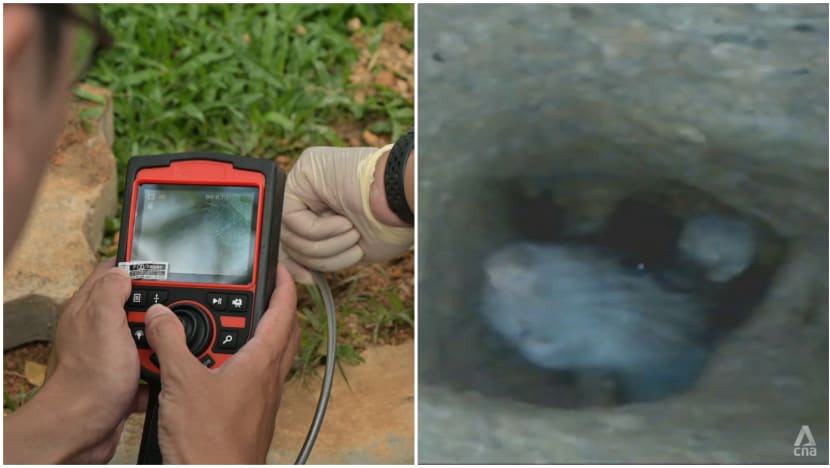
National Environment Agency officers from the Rat Control Section using a videoscope to check a burrow for rats (left). The camera captured a rat in a burrow near a bin centre. (Images: CNA/Raydza Rahman, National Environment Agency)

This audio is generated by an AI tool.
SINGAPORE: With gloved hands, Mr Mahyuddin Humaidi holds up an endoscope – a long and thin tubular device with a light and tiny lens at the end, typically used by doctors during surgical procedures.
But Mr Mahyuddin is not inserting the endoscope into a body – he's sticking it into a crevice in the ground.
The National Environment Agency (NEA) officer is no surgeon. He is a senior executive with the agency's Rat Control Section, tasked to inspect areas for rats.
The endoscope, which he and his team call a videoscope, is used to uncover rats in their burrows.
It is not the only device the team uses to find the rodents. They also use a boom pole with a camera to inspect high, hard-to-reach areas and a camera with infrared technology to capture vermin on the move.
The team is also looking to add to its arsenal. It recently tested thermal imaging cameras at hotspots such as back alleys to monitor the pests. The four-month pilot with these devices is underway, during which the team will assess its effectiveness for further use.
Singapore authorities last year found an average of 5,203 rat burrows in public areas, compared with 4,163 in 2022, during a survey done every two months.
Earlier this year, pest controllers cited an increase in rat-related complaints and enquiries, possibly due to poor food waste management and wetter weather.
A rise in leptospirosis cases in dogs in January was also partly blamed on rats.
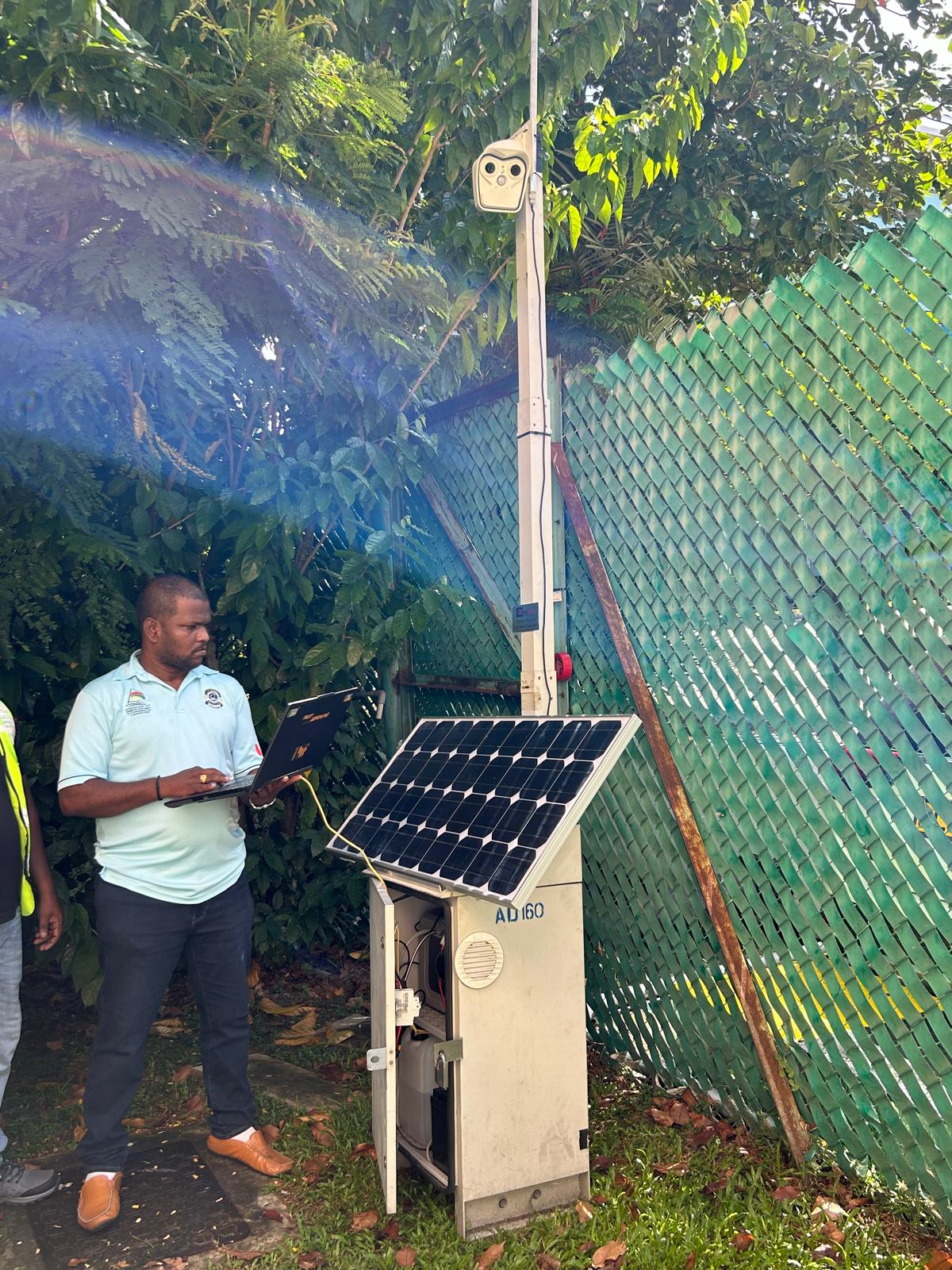
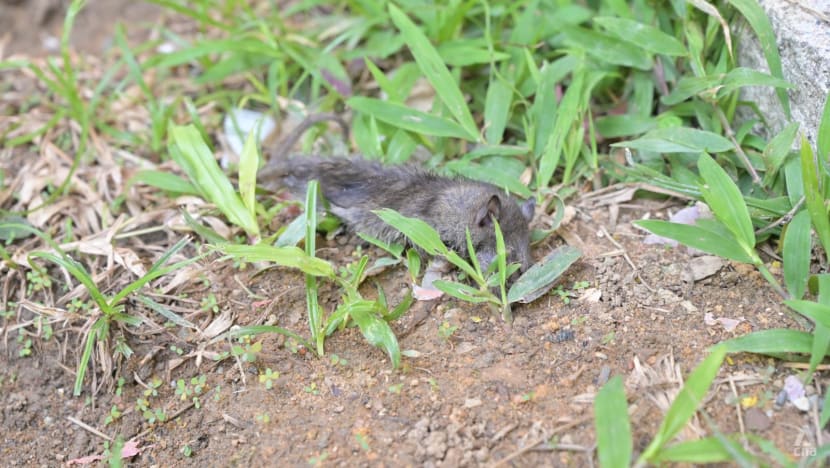
SCOPING OUT BURROWS
CNA trailed NEA officers from the Rat Control Section when they went on a hunt for rat burrows in Toa Payoh last month.
Working as a pair, Mr Mahyuddin and fellow senior executive Bernard Chiang unwound the roughly 1.5m-long probe of the videoscope.
Wearing latex gloves, Mr Mahyuddin then inserted the end of the probe into a crevice under a concrete pavement. Mr Chiang, looking at the screen, directed his partner on where to move the probe.
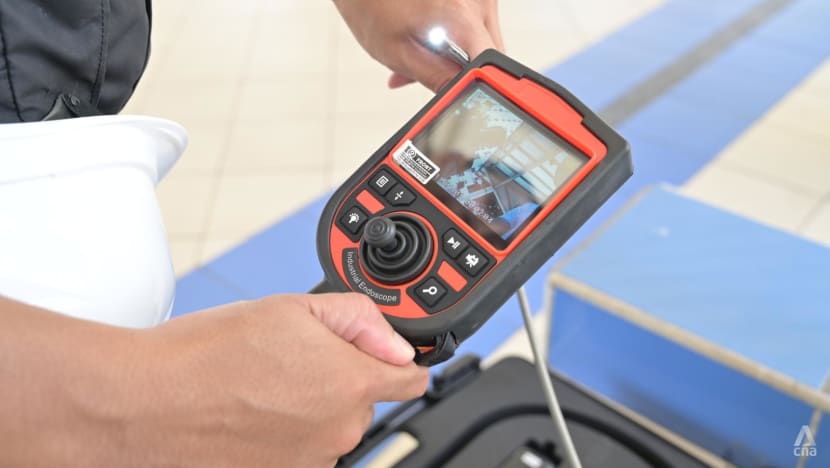
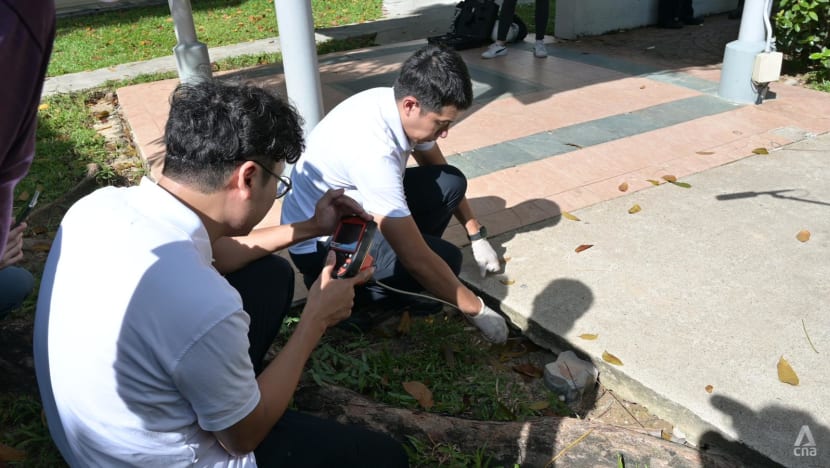
The officers are familiar with the signs of a potential burrow. On grass patches, freshly overturned soil, usually more orange, and a lack of grass can indicate a newly dug burrow.
Sometimes, rats can dwell in flower pots, which NEA officers also inspect.
When they discover rats, NEA officers will advise property owners to take pest control measures – including poisoning or culling the rodents – before the burrows are filled in.
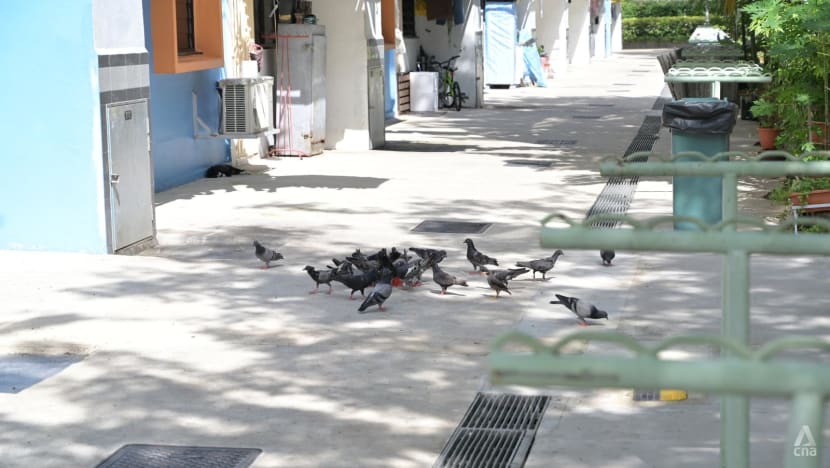
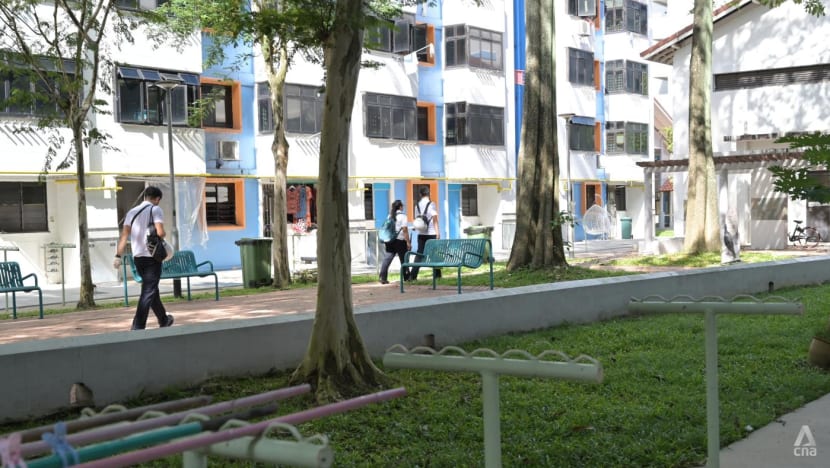
On their way to their next inspection, the officers came across a flock of pigeons feeding on food presumably thrown from the window of a flat. Feeding pigeons is illegal and offenders can be fined up to S$10,000 (US$7,400) under the Wildlife Act.
This, they said, was what attracted rats here.
If the rats' three basic needs – food, water and shelter – are met, they can thrive in the area, Mr Chiang said.
That may explain the rat spotted a moment later at another burrow the pair inspected. This burrow was within a few metres of a shuttered bin centre, its likely food source.
With the videoscope, the pair managed to film a live rat in its burrow. The rodent retreated at the light disturbance, but not before a camera captured its long snout. The video, date- and time-stamped, will later be submitted as part of the team's inspection findings to the Bishan-Toa Payoh Town Council.
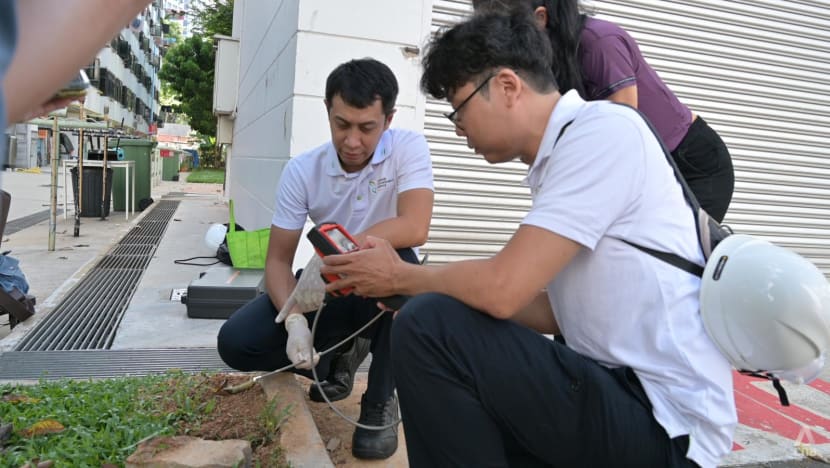
As officers could not see the rat's body, they were unable to determine the species. Sewer rats, those more commonly found in burrows, have tails that are as long or slightly shorter than their bodies. Roof rats, those that usually loiter in spaces high above the ground such as the ceiling, have tails that are longer than their bodies, Mr Chiang said.
But NEA officers have started to observe sewer rats migrating upwards, to the top of market stalls, for example.
GOING ABOVE GROUND AND UNDERGROUND
At a central refuse chute below a housing block, the officers fit a digital camera to the top of a boom pole that is extendable up to 3m. The pole allows officers to check hard-to-reach areas such as the top of food stalls.
Mr Chiang has synced the camera to an app on a mobile phone via WiFi, enabling him to view real-time footage remotely from his phone.
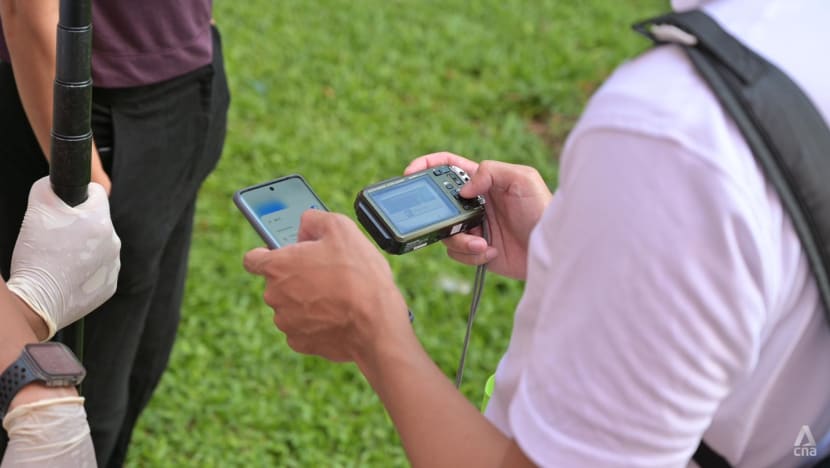
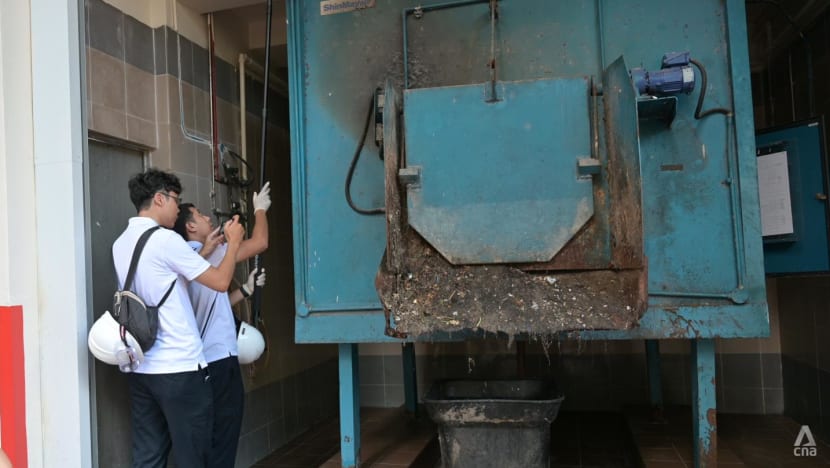
Mr Mahyuddin hoisted the camera above the chute to check for rats in the narrow space between the chute and its ceiling.
The NEA officers also used torchlights to check for rats in shrubbery or drains in housing estates. They found one rat taking shelter at the corner of a drain.
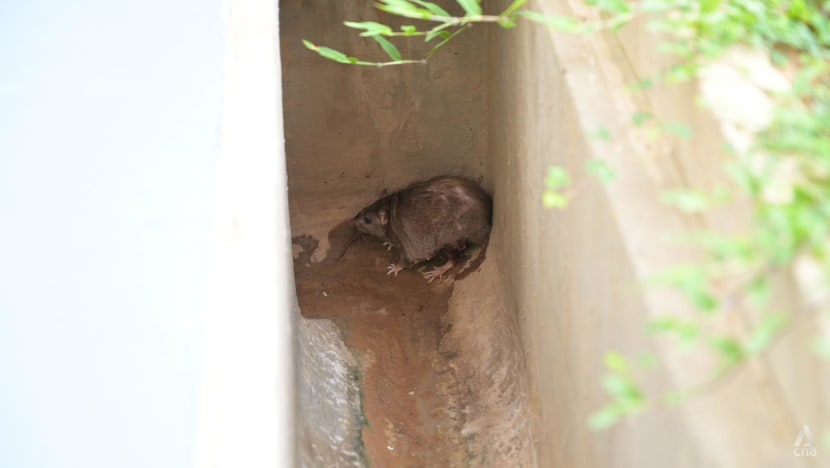
The rat fled farther into the drain when spotted, and the officers decided to deploy an infrared camera.
The camera, secured to the underside of a drain cover with zip ties, is triggered by heat and motion to take both photos and videos of passing rats. The infrared light from the camera allows the device to film the rats even in total darkness.
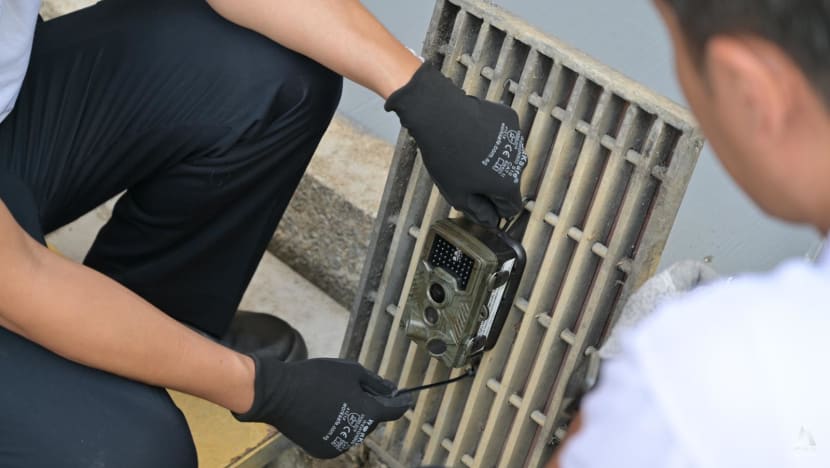
The camera helps determine the frequency and timing of rat movements in the area and allows officers to locate burrows by showing the direction the rats came from.
Officers will leave the camera for up to a week to record what they need.
"The main purpose of this camera is ... we put it where an officer cannot come in and monitor because it's a very small place ... and sometimes the activity comes when it's sunset, at night or the wee hours of the morning," said Mr Mahyuddin.
Executive manager Tan Guan Qun, who oversees the Rat Control Section's operations, said that to eliminate rats, the team has to figure out their food source.
When the team receives feedback on rodent sightings, officers are sent to check the vicinity for possible food sources such as a market.
"The principle is that (rats) will find food sources. Refuse centres are one of the food sources. So once you block them out, the drain, the covers (are) all blocked, there should not be a food source to sustain the population. Even if like, let's say, there is animal feeding, or one person throws litter here and there, the food source will not be enough to sustain the infestation.
"If you have a big infestation to sustain 100 rats, there must be a consistent food source from somewhere. So (if) you go by that logic ... you cut off the refuse, the food source, technically, logically, the population will go down."
















